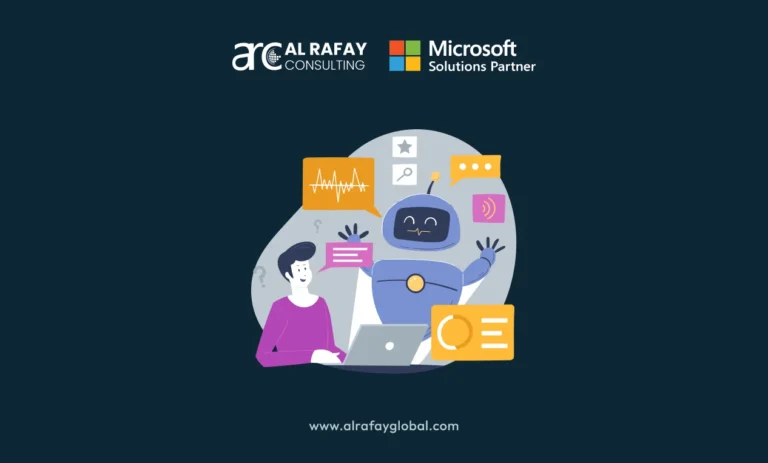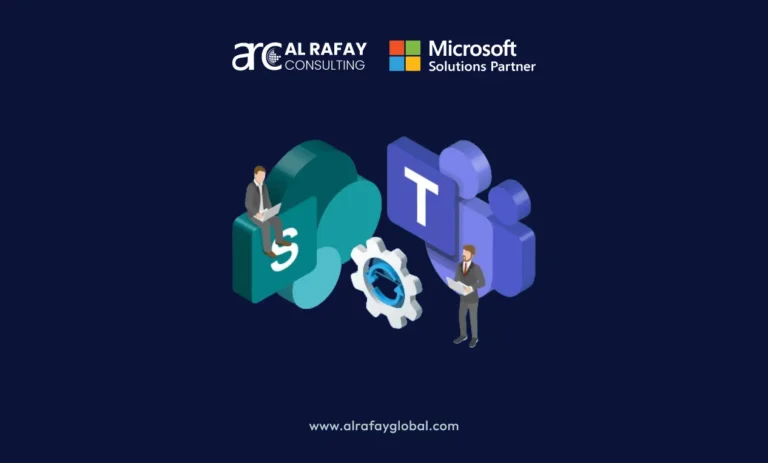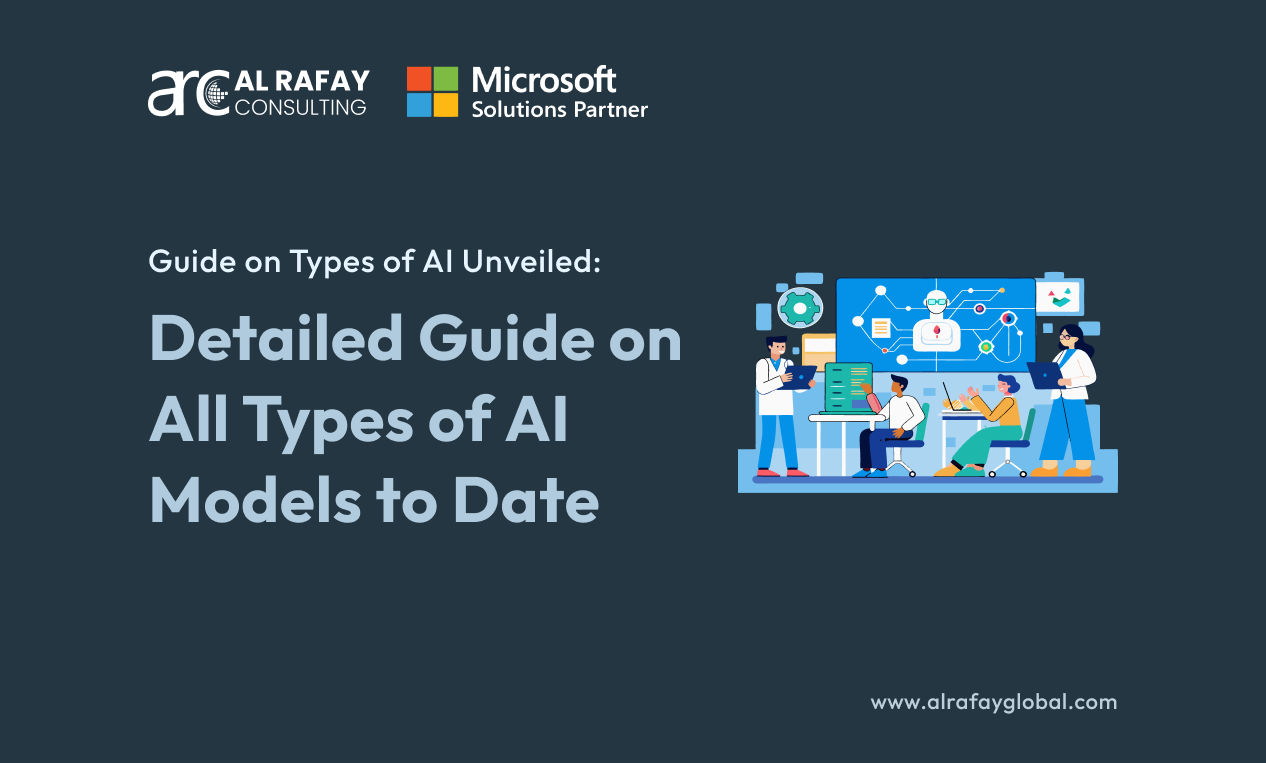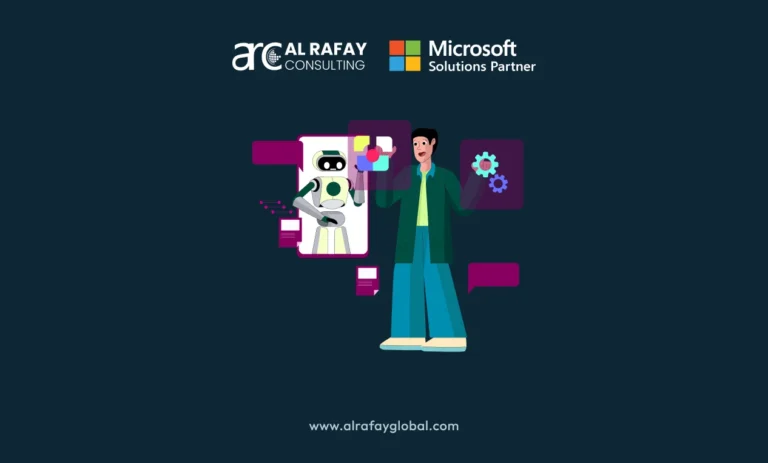Artificial Intelligence (AI) is a transformative force that has evolved from a science fiction dream into a critical part of our everyday lives. The effects of the AI systems really came to light after the explosive introduction of GPT models in November 2022. Since then the AI market has grown exponentially. According to a report by Statista, the market cap of the Artificial intelligence market was around $184.04 billion in 2024, and it is expected to reach a whopping $826.7 billion by 2030. That’s huge!
But GPT and LLMs are not the only type of AI. The scope of AI is vast and multifaceted, encompassing everything from simple calculators to complex predictive algorithms that can outperform human cognition in specific tasks. The journey of AI began in the mid-20th century, with the seminal work of pioneers like Alan Turing, who proposed the concept of a machine that could simulate any human intellect. Since then, AI has traversed an incredible path of evolution, marked by milestones such as the creation of the first neural network in the 1950s and the development of machine learning algorithms in the 1980s.
The purpose of this blog is to discuss all the different types of artificial intelligence in detail. We will breakdown everything strategically and in detail so you have a very good understanding of the topic by the end of the blog. But if you are a hasty reader, here is a quick list of all the types of AI models.
- Narrow AI
- General AI
- Super Intelligent AI
- Reactive Machines
- Limited memory machines
- Self-aware AI
- Neural Networks
- Evolutionary Algorithms
Evolutionary Perspective on Types of AI
The concept of AI dates back to ancient civilizations, but it was Alan Turing’s 1950 paper, “Computing Machinery and Intelligence,” that laid the groundwork for modern AI. The subsequent decades saw the development of the first AI programs, like the Logic Theorist in the 1950s, and ELIZA in the 1960s, which could simulate conversation. The 1990s brought about a resurgence in AI research, leading to advancements in machine learning and the triumph of IBM’s Deep Blue over chess champion Garry Kasparov.
Each era of AI brought forth new types, from rule-based systems to adaptive algorithms. The shift from hard-coded knowledge to machine learning allowed AI to learn from data, leading to today’s AI that can drive cars, trade stocks, and even create art.
These milestones have not only advanced the capabilities of AI but also influenced how we categorize AI systems. Initially, AI was seen as a monolithic concept, but now it’s understood to exist on a spectrum, from narrow AI performing specific tasks to the aspirational goal of creating a superintelligent AI.
Broad Categorization of The Types of Artificial Intelligence
Artificial Intelligence (AI) can be broadly categorized into three types based on its capabilities and potential impact on society. Each type represents a different stage in AI’s cognitive and functional abilities.
Narrow AI (Weak AI):
Narrow AI, also known as Weak AI, refers to AI systems that are designed to handle a single task or a limited set of tasks. These systems operate under a constrained set of conditions and lack the ability to perform beyond their programming. They are called “weak” because they do not possess consciousness, self-awareness, or genuine intelligence; instead, they simulate human behavior based on a predefined set of rules and patterns.
Narrow AI systems typically operate using a combination of rule-based algorithms, decision trees, and sometimes machine learning models. They analyze data within their domain and follow programmed instructions.
Examples of Narrow AI are ubiquitous in our daily lives. Virtual assistants like Siri and Alexa, recommendation systems on Netflix and Amazon, and spam filters in email services all fall under this category. These systems excel at their specific tasks but cannot perform beyond their defined capabilities.
General AI or Artificial General Intelligence (Strong AI):
General AI, or Strong AI, is the type of AI that can understand, learn, and apply knowledge in a way that is indistinguishable from human intelligence. It is characterized by its ability to generalize learning from one domain to another, allowing it to perform any intellectual task that a human being can.
As of 2024, this form of AI remains largely theoretical and has a long way to go. The primary challenge in creating Strong AI is developing systems that can reason, solve problems, and make decisions in the same way humans do, which involves abstract thinking and understanding context.
However, it doesn’t mean that there is no progress. Remember we talked about ChatGPt and large language models? Yes, they are characterized as Strong AI. Also, recently in May 2024, Google unveiled the new capabilities of its Gemini 1.5 AI platform and the revolutionary Project Astra. And I must say that it is mind-boggling. You can check out the latest AI breakthroughs announced by them on the official page of Google I/O 2024. After this, a lot of AI critics are debating that we are entering into the dangerous zone of AI.
Artificial Superintelligence:
Superintelligent AI refers to an AI that surpasses human intelligence across all fields, including creativity, general wisdom, and problem-solving. Such an AI would be capable of outperforming the best human minds in practically every discipline.
But yes, we are not in the Terminator Movie era as of now and superintelligence still remains a thing of sci-fi. The prospect of Superintelligent AI raises significant ethical questions and existential risks. It poses scenarios where AI could become uncontrollable and capable of making decisions that may not align with human values or well-being. So, let’s leave it for now.
Types of AI Based on Capabilities
Reactive Machines:
Reactive AI machines are AI systems that operate based on predefined rules and do not have memory or learning capabilities. They make decisions solely based on the current input without considering past interactions. These systems excel in specific tasks but lack adaptability.
Examples:
- Deep Blue: IBM’s chess-playing computer that defeated world chess champion Garry Kasparov in 1997. Deep Blue evaluated millions of possible moves using a brute-force search algorithm.
- Rule-Based Systems: These include expert systems for medical diagnosis, where rules guide decision-making based on symptoms and patient history.
- Deep Blue: IBM’s chess-playing computer that defeated world chess champion Garry Kasparov in 1997. Deep Blue evaluated millions of possible moves using a brute-force search algorithm.
Limited Memory AI
Limited memory AI, as the name suggests, is a type of artificial intelligence that can store and utilize information for a specific period, unlike reactive machines that solely operate on current stimuli. The technical workings of these systems often involve machine learning techniques like reinforcement learning, where the AI learns optimal behaviors through trial and error and receives rewards for successful actions. This learning process is dynamic, allowing the AI to adapt to new situations and improve over time.
The data can be historical information fed during training or real-time observations the AI makes while operating.
Real-World Applications of Limited Memory AI:
- Self-driving cars: Limited memory AI is crucial for self-driving cars. The AI is trained on massive datasets of traffic rules, road signs, and driving scenarios. It also factors in real-time observations like the movement of other vehicles and pedestrians from sensor data (e.g., cameras, lidar) to make safe driving decisions.
- Chatbots: Limited memory AI is used in chatbots to understand user queries and provide relevant responses. By analyzing past interactions, the chatbot can learn user preferences and tailor its responses accordingly. An amazing new advancement in chatbot tech is Enterprise GPT by Al Rafay Consulting, which can provide answers based on the specific documents of a company, unlike GPT and other NLP bots that work on internet data.
- Self-driving cars: Limited memory AI is crucial for self-driving cars. The AI is trained on massive datasets of traffic rules, road signs, and driving scenarios. It also factors in real-time observations like the movement of other vehicles and pedestrians from sensor data (e.g., cameras, lidar) to make safe driving decisions.
Theory of Mind AI:
Theory of Mind AI aims to understand human emotions, beliefs, and intentions. It goes beyond pattern recognition and attempts to model how humans think and feel. Unlike current AI, which excels at specific tasks but lacks social intelligence, ToM AI strives to be more human-like in its interactions.
Imagine an AI that can not only play chess at a grandmaster level but also understand your frustration when you lose. That’s the potential of ToM AI. However, this field of AI is currently only in its initial stages and will take a long time before it can master human emotions. Plus, this type of AI capabilities can also prove to be extremely harmful to society. We will discuss these downsides in detail in another blog.
Current Research:
Theory of Mind AI combines natural language processing (NLP), computer vision, and cognitive modeling. Researchers are applying advanced machine learning algorithms to analyze vast amounts of data on human behavior, including facial expressions, speech patterns, and social interactions. This data helps AI models learn to recognize and interpret these cues, leading to a better understanding of human mental states.
Brain-Computer Interfaces – While still in its early stages, BCIs hold the potential for AI to directly access and interpret brain signals. This could revolutionize ToM AI by allowing a deeper understanding of human emotions and thought processes. You can find a detailed study of brain-computer Interfaces at MDPI.
Self-Aware AI:
The most advanced and speculative type of AI is Self-Aware AI. Self-aware AI possesses consciousness or a sense of self. This tech would understand its own existence, emotions, and desires. While this concept remains theoretical, it raises profound questions about machine sentience.
The implications of such technology are profound and far-reaching, raising questions about the nature of consciousness and the ethical treatment of machines. The development of self-aware AI would involve not just technical advancements but also philosophical inquiry and ethical guidelines to ensure that such powerful technology is developed responsibly and for the benefit of society.
Yes, this is what Terminator would look like. But don’t worry it’s not happening anytime soon.
Types of AI Models Based on Functionality
The functionality of Artificial Intelligence (AI) systems is a key aspect that determines their application in various domains. AI can be designed to perform a range of functions, from solving specific problems to mimicking human decision-making processes. Here are the 4 main categories based on the functionality:
Expert Systems:
These are AI applications that replicate the decision-making ability of a human expert. They are designed to solve complex problems by reasoning through bodies of knowledge, represented mainly as if-then rules rather than through conventional procedural code.
The core components of an expert system include a knowledge base, which contains the domain knowledge, and an inference engine, which applies the knowledge to specific situations. For example, in medical diagnosis, an expert system can assess patient data and symptoms to suggest diagnoses and treatments, leveraging its vast knowledge base of medical information.
Fuzzy Logic Systems:
Fuzzy systems are a form of AI that deals with reasoning that is approximate rather than fixed and exact. Unlike traditional binary sets (where variables maybe 0 or 1), fuzzy logic variables may have a truth value that ranges between 0 and 1. This approach is useful in dealing with uncertain or imprecise information, making it ideal for control systems and decision-making processes in complex environments.
For instance, fuzzy logic is used in automated control systems for trains or washing machines, where it interprets various inputs and makes decisions based on degrees of truth rather than the usual “true or false” (1 or 0) Boolean logic.
Neural Networks:
Algorithms that attempt to recognize underlying relationships in a set of data through a process that mimics the way the human brain operates are called artificial neural networks. They can adapt to changing input; thus, the network generates the best possible result without needing to redesign the output criteria. There are different types of neural networks, each with its architecture and function.
For example, feedforward neural networks consist of input, hidden, and output layers, and they are typically used for pattern recognition. Convolutional Neural Networks (CNNs) are designed to process pixel data and are used for image recognition tasks.
Evolutionary Algorithms:
These are a family of algorithms for global optimization inspired by biological evolution. These algorithms use mechanisms such as mutation, crossover, and selection to evolve solutions to problems over time. They are especially useful in complex problem spaces where traditional optimization techniques struggle. For example, evolutionary algorithms can optimize the aerodynamic design of vehicles or develop investment strategies in financial markets.
Different Types of AI Models Based On Learning Techniques
Machine Learning Techniques:
Supervised Learning:
Supervised learning is a type of machine learning where the algorithm is trained on labeled data. The training data includes input-output pairs, where the desired output is known. The algorithm makes predictions or decisions based on this data and is corrected when its predictions are wrong. Supervised learning is characterized by its use of labeled datasets to train algorithms that can classify data or predict outcomes accurately.
Common applications of supervised learning include image recognition, where algorithms are trained to identify and categorize visual content within images, and spam detection, where email programs learn to filter out unwanted messages.
Think of it this way: Imagine you’re training a machine to recognize cats in images. You show it thousands of pictures of cats and other animals. By analyzing these images, the machine learning algorithm learns to identify patterns that distinguish cats from other objects. The more images it sees, the better it gets at recognizing cats in new pictures it hasn’t seen before.
Unsupervised Learning:
Unsupervised learning involves training an algorithm on data that does not have labeled responses. The algorithm tries to identify patterns and relationships in the data on its own. This type of learning is characterized by its ability to discover hidden structures in unlabeled data.
Unsupervised learning is used for clustering, where the algorithm groups similar data points together, and anomaly detection, where it identifies unusual patterns or outliers in the data. I am not going into details about how this works, but a quick hint is that the technique uses a method called K-means clustering.
Reinforcement Learning:
Reinforcement learning is a type of learning where an agent learns to make decisions by performing actions and receiving rewards or penalties. It is characterized by trial-and-error search and delayed reward.
Reinforcement learning is used in various applications, including game playing, where AI agents learn to play and improve at games like chess or Go, and robotics, where robots learn to perform tasks through interaction with their environment.
Remember the DeepBlue artificial intelligence software that we discussed above that beat Garry Kasparov, yes, that was based on reinforcement learning.
Deep Learning:
Deep learning is an advanced subset of machine learning that’s inspired by the structure and function of the human brain. Just as our brains use neurons to process information, deep learning uses artificial neural networks to parse data. These networks are composed of layers of algorithms called nodes, which can learn and make intelligent decisions on their own.
Neural networks are structured in layers, each designed to recognize different aspects of the data it processes. The first layer might identify simple features, like edges in an image, while deeper layers recognize more complex elements, like shapes or objects. This hierarchical approach allows deep learning models to handle tasks of increasing complexity, from voice recognition to translating languages.
Deep learning has been a game-changer in many fields. It powers the face recognition systems in our smartphones, the recommendation engines that suggest products or movies, and is the driving force behind the development of autonomous vehicles.
Wrapping It Up
Finally, our in-depth guide on the types of AI comes to an end. It is clearly evident that the world of Artificial intelligence is immensely complex and requires a huge amount of research and development to reach its full potential.
If you are a business working on a new AI project and need help, then contact our Microsoft-certified AI experts at Al Rafay Consulting to get the best services.













